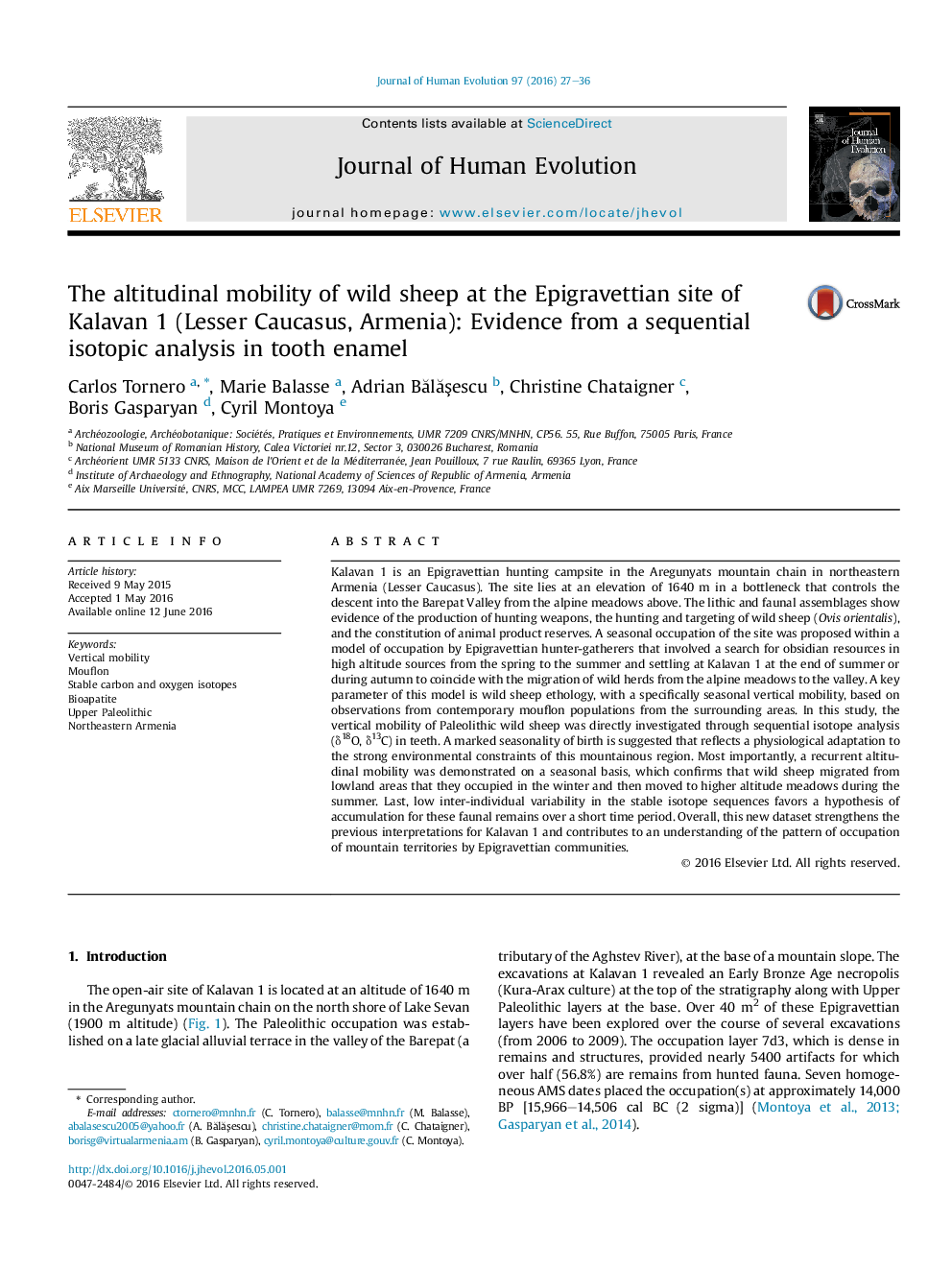| کد مقاله | کد نشریه | سال انتشار | مقاله انگلیسی | نسخه تمام متن |
|---|---|---|---|---|
| 4555776 | 1628152 | 2016 | 10 صفحه PDF | دانلود رایگان |

Kalavan 1 is an Epigravettian hunting campsite in the Aregunyats mountain chain in northeastern Armenia (Lesser Caucasus). The site lies at an elevation of 1640 m in a bottleneck that controls the descent into the Barepat Valley from the alpine meadows above. The lithic and faunal assemblages show evidence of the production of hunting weapons, the hunting and targeting of wild sheep (Ovis orientalis), and the constitution of animal product reserves. A seasonal occupation of the site was proposed within a model of occupation by Epigravettian hunter-gatherers that involved a search for obsidian resources in high altitude sources from the spring to the summer and settling at Kalavan 1 at the end of summer or during autumn to coincide with the migration of wild herds from the alpine meadows to the valley. A key parameter of this model is wild sheep ethology, with a specifically seasonal vertical mobility, based on observations from contemporary mouflon populations from the surrounding areas. In this study, the vertical mobility of Paleolithic wild sheep was directly investigated through sequential isotope analysis (δ18O, δ13C) in teeth. A marked seasonality of birth is suggested that reflects a physiological adaptation to the strong environmental constraints of this mountainous region. Most importantly, a recurrent altitudinal mobility was demonstrated on a seasonal basis, which confirms that wild sheep migrated from lowland areas that they occupied in the winter and then moved to higher altitude meadows during the summer. Last, low inter-individual variability in the stable isotope sequences favors a hypothesis of accumulation for these faunal remains over a short time period. Overall, this new dataset strengthens the previous interpretations for Kalavan 1 and contributes to an understanding of the pattern of occupation of mountain territories by Epigravettian communities.
Journal: Journal of Human Evolution - Volume 97, August 2016, Pages 27–36